Clancy Tucker's Blog, page 132
December 10, 2018
11 December 2018 - MARGARET FULLER – WRITER AND WOMEN’S RIGHTS ACTIVIST
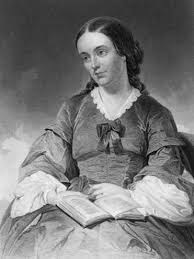
MARGARET FULLER - WRITER AND WOMEN’S RIGHTS ACTIVIST -
G'day folks,
Sarah Margaret Fuller Ossoli, commonly known as Margaret Fuller, was an American journalist, critic, and women's rights advocate associated with the American transcendentalism movement. She was the first full-time American female book reviewer in journalism.
Sarah Margaret Fuller was born 23 May 1810 in Cambridgeport, Massachusetts. Her father was a lawyer and, for eight years, a representative of Congress, enabling him to move in influential political circles.
Margaret was educated at home and also at the Boston Lyceum for Young Ladies (1821-22). She was a voracious reader and became well-known for being one of the best read people in New England. She became the first woman to have access to Harvard Library when researching a book on the Great Lakes region. She also became fluent in the classics and several modern languages. Her thirst for knowledge was such that she felt little in common with other girls her own age. She was less interested in more conventional pursuits expected of women, Fuller was hopeful of continuing her studies and beginning a career in journalism.

However, after the unexpected death of her father from cholera in 1836, Fuller found herself in a position of having to look after her family. Also, she did not benefit from her father’s estate, with the bulk of the family fortune going to two uncles (her father did not make a will). To supplement her income, she took a job as a teacher in Boston and later Providence, Rhode Island.
In 1839, Fuller moved the family to Jamaica Plain, Massachusetts. Fuller began women’s discussion groups where Fuller would lead talks about the role of women in society.
In 1839, Fuller was offered the job of editing the Transcendentalists’ magazine – ‘The Dial’ by Ralph Waldo Emerson.The Transcendentalists were an influential philosophical movement in the Nineteenth Century. They believed in personal transformation and looking beyond religious dogmas. Fuller accepted the position and became a leading figure in the Transcendentalist movement. Although she was sympathetic to the movement, she had some reservations about the label ‘Transcendentalist’ being applied to her. However, she frequently visited leading Transcendentalists, and wrote about her experiences in her book called ‘Summer on the Lakes‘ (1844)
With growing confidence as a writer, Fuller also returned to themes of female emancipation and the role of women in society. In 1845, she published – ‘Women in the Nineteenth Century‘ – It investigated the role of women in society and how they could play a greater role in society. (Fuller had originally intended to call it The Great lawsuit: Men ‘versus’ Men, Woman ‘versus’ Women.)

In 1844, she moved to the New York Tribune, where she became a literary critic and later – the New York Tribune’s first female editor.
It was a meteoric rise for Fuller. She frequently broke gender barriers, taking roles rarely allowed for women. She had a very strong personality – contemporaries say she had great self-confidence and self-belief in her own capacities.
In 1846, Fuller was sent to Europe as a foreign correspondent for the New York Tribune. She met leading literary figures of the day; she also met the Italian revolutionary Giuseppe Mazzini.In 1848, she secretly married Giovanni Angelo Ossoli, a former marquis disinherited by his family because of his support for the revolutionary Mazzini. Their relationship was kept secretive for several months, though after the birth of their child – Angelo Eugene Philip Ossoli, they became less so. In 1849, they became involved in Giuseppe Mazzini’s fight for the establishment of a Roman republic. Fuller worked as a nurse, whilst her husband fought.
In 1850, the couple took a boat back to America. But, on 19 July 1850, the returning ship hit a sandbank. The ship was abandoned amidst crashing waves and Fuller was never seen again. She had previously written of feeling bad omens about her fate. Her last manuscript on the Roman republic was lost. After her death, a short biography was published, which proved popular.
Fuller was interested in a range of social topics. She believed in social reform from women’s rights to the prison system. In particular, she believed women had a right to a full education. She felt a complete education would enable women to be more independent and enable a wider horizon of possibilities than the social conventions of the Nineteenth Century allowed. She also abhorred slavery and felt the Native Americans had been unfairly treated. She wrote extensively on a range of social issues from homelessness to women’s equality and played a role in promoting progressive ideas, which were later taken up by women rights activists and social campaigners.
 Clancy's comment: Yet, another outstanding woman. However, when it comes to men standing aside to give women a chance, we still have a long way to go.
Clancy's comment: Yet, another outstanding woman. However, when it comes to men standing aside to give women a chance, we still have a long way to go.I'm ...


Published on December 10, 2018 12:16
December 9, 2018
10 December 2018 - LOST ENGLISH WORDS

LOST ENGLISH WORDS
G'day folks,
Welcome to another collection of words that have gone missing.
acrasial adj 1851 -1851 ill-regulated; ill-tempered The acrasial judge was known for her rants against younger lawyers.
addecimate v 1612 -1755 to tithe They addecimated regularly but were not otherwise known for their charity.
adimpleate v 1657 -1657 to fill up The new technique adimpleates the cans with milk through injection.
adnascentia npl 1706 -1731 root-like branches that sprout into the earth from a plant's stem Every winter, the adnascentia would shift around, destroying the lawn's even texture.
aeipathy n 1847 -1853 continued passion; an unyielding disease Her aeipathy for stamp collecting bordered at times on the pathological.
affictitious adj 1656 -1656 feigned; counterfeit The forger was caught despite his masterfully-crafted affictitious signatures.
affuage n 1753 -1847 right to cut wood in a forest for family fire The family's right of affuage ensured they would have enough wood for winter.
agonarch n 1656 -1656 judge of a contest or activity Our competition will require six agonarchs to ensure fairness.
agonyclite n 1710 -1710 member of a heretical sect that stood rather than kneeled while praying Agonyclites must have had hardy feet to endure their services.
airgonaut n 1784 -1784 one who journeys through the air Balloonists, skydivers and other airgonauts are all a little mad, if you ask me.
alabandical adj 1656 -1775 barbarous; stupefied from drink His behaviour after the party was positively alabandical.
albedineity n 1652 -1652 whiteness
The monotonous albedineity of the snow-covered field was blinding.
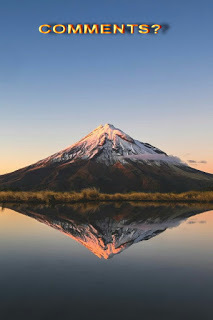
Clancy's comment: Mm ... What can I say?
I'm ...
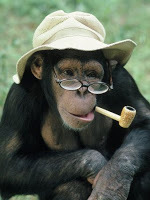

Published on December 09, 2018 11:34
December 8, 2018
9 December 2018 - CLANCY TUCKER PHOTOGRAPHY
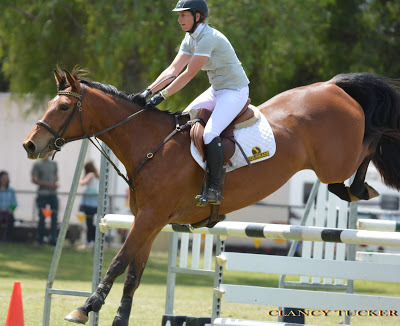
CLANCY TUCKER PHOTOGRAPHY
G'day folks,
Yep, I don't just write books. I am also a photographer, and it's been a while since I posted some of my work. We've just had our local Show, and I actually entered six photos this year and managed to win three prizes. Anyway, here is sample of what I've been doing in my spare time. Enjoy ...

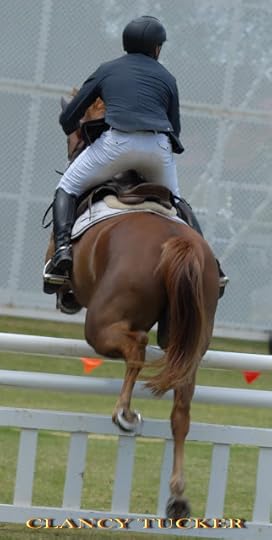
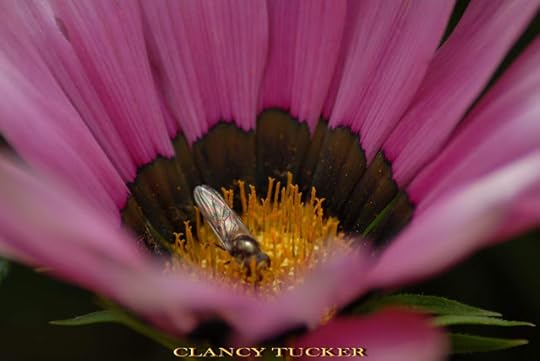



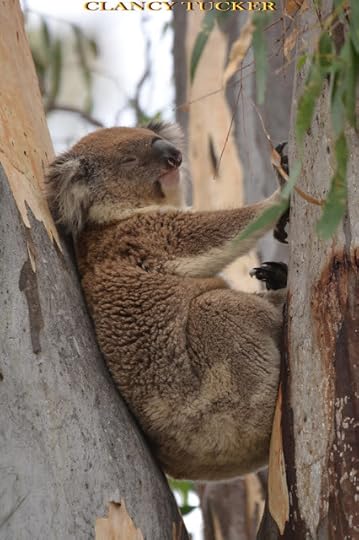



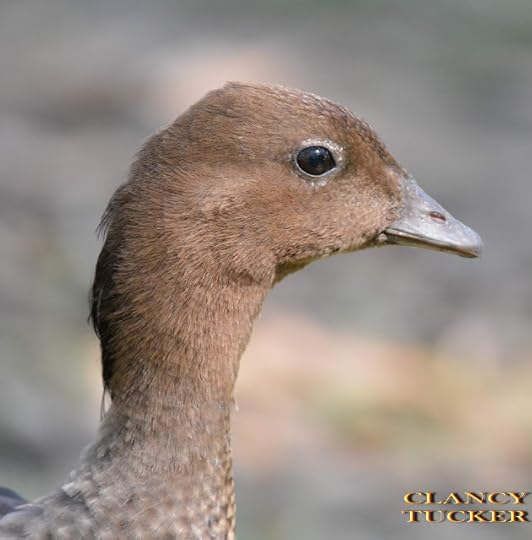




Clancy's comment: It's a great world looking through a lens. The last shot is one of a Thai motorcycle police officer on holidays. I met a bunch of them and, because I came from Australia, they called me 'Sydney'.
I'm ...
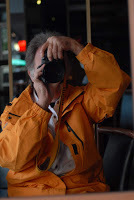

Published on December 08, 2018 12:30
December 7, 2018
8 December 2018 - BOURTZI - HOME OF EXECUTIONERS IN GREECE
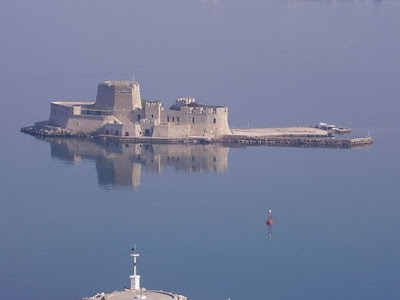
BOURTZI
- HOME OF EXECUTIONERS IN GREECE -
G'day folks,
This 15th-century island fortress later served as home to the executioners no one wanted to live near.
An executioner’s life is not an easy one. The men who spent their days carrying out the death sentences of the criminals incarcerated in the Greek prison of Palamidi in the latter half of the 19th century lived alone on an island, because most people did not want to live near them.

The imposing island fort of Bourtzi off the coast of Nafplio was home to executioners for several decades, after it stopped serving a military purpose. Bourtzi, meaning tower in Turkish, was built by the Venetians, invaded by the Turks, and is now a part of Greece.
When the Venetians, in the 15th century, discovered the strategic importance of the small island, situated right near the Nafplio port, they built a fortress in the shape of an imperfect hexagon to match the shape of the narrow landmass. The stairs were made movable in the 3-storey tower structure, and cannons and flamethrowers were positioned such that they could be unleashed at short notice.

A major threat at the time came from the pirates wandering the nearby seas. But the fort eventually fell, in 1715, into the hands of the Ottoman Turks, who went on to strengthen the fortification even further. They also dropped hundreds of large stones in the surrounding waters, to ensure that no big ships could reach the island.
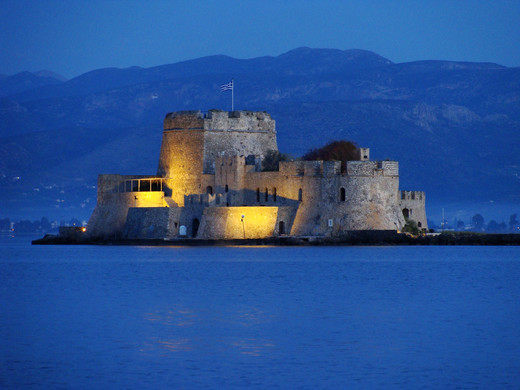
During the time of the Greek Revolution, between 1821 and 1832, it was won back by the Greeks, who used it to shelter their leaders from the chaos that was taking over the rest of the land. When the strife subsided, Bourtzi was no longer required as a defensive fortress, and the executioners were housed there for the second half of the century.
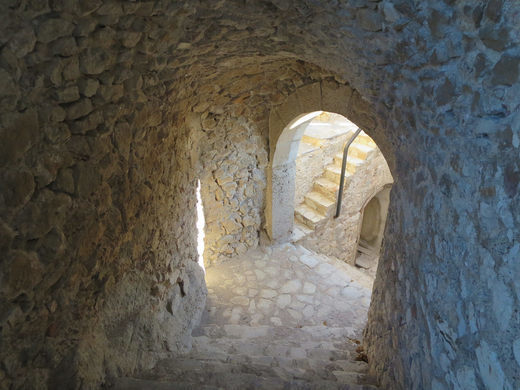
If the people in the 19th century had qualms about living near these men, 20th-century tourists had no such misgivings about staying in the very spaces previously occupied by them. The fortress was converted into a hotel in the 1930s, functioning all the way till the 1970s.
After serving in all these different roles, it now sits empty aside from visits by curious tourists wanting to see the vacant castle and its great views of the city, and the music festival occasionally held there.

Clancy's comment: Looks like a fascinating place. Make a great writer's retreat.I'm ....
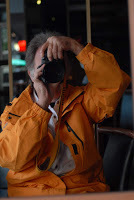

Published on December 07, 2018 12:51
December 6, 2018
7 December 2018 - A COLLECTION OF GREAT QUOTES

A COLLECTION OF GREAT QUOTES
G'day folks,
Welcome to some great quotes that might inspire you.













Clancy's comment: Mm ... I hope these did the job.
I'm ...
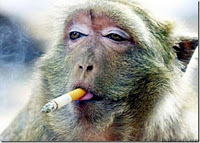
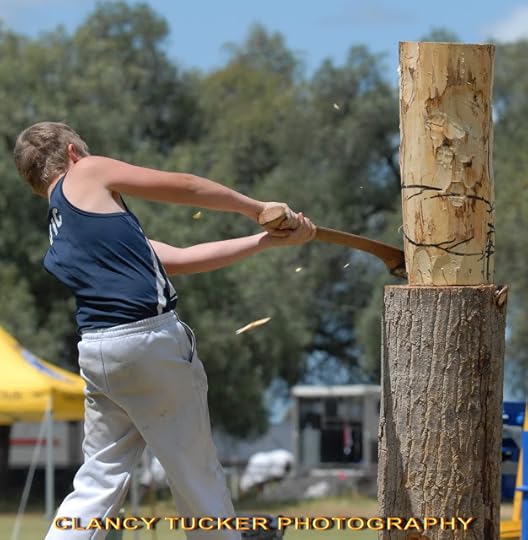
Published on December 06, 2018 11:25
December 5, 2018
6 December 2018 - JEFF STREEBY - GUEST POET

JEFF STREEBY - GUEST POET -
G'day folks,
Sadly, I don't get to interview many poets, but today is your lucky day.
Welcome, Jeff ...
TELL US A LITTLE ABOUT YOURSELF AND YOUR POETRY JOURNEY.I’m a Pushcart Prize nominee and a nominee for Sundress Press' Best of the Net Anthology, and I hold a Master of Fine Arts degree in poetry from New England College in Henniker, New Hampshire. I’m a frequently published mainstream poet whose work has appeared in over 40 literary journals in the US, the UK, Ireland, and Asia, including Contemporary Haibun Online, Haibun Today, Naugatuck River Review, Rattle, and Whiskey Island. I have over 30 years experience as a teacher of English language and literature at secondary and university levels.
I grew up in Sioux City, Iowa, an historic terminal market for western beef, where I worked for Waitt Cattle Company while I attended Morningside College. In the 1970s and ’80s, I worked in Florida and Minnesota as a groom and stableman for dressage and A-Circuit hunter-jumper trainers. I was licensed on Thoroughbred race tracks of Nebraska and Montana as both a groom and assistant trainer. After several years of teaching in El Paso, Texas, doing some daywork on ranches near Sierra Blanca, and boarding horses at our farm in New Mexico, my family and I moved to Great Falls, Montana, where I taught English. I retired from education in California then spent three years teaching Business English in the Faculty of Arts at Assumption University of Thailand in Bangkok.
My performances as a cowboy poet incorporate my expertise as an educator, his love of history and his passion for the English language. I have appeared in the Public Television (PBS) Series Cowboy Corral and in November 2013, on BYU Radio's Appleseed program.
WHEN AND HOW DID YOU BECOME A POET?I began writing and performing “Cowboy Poetry” in 1992 and enjoyed some local popularity (Texas and Montana) and some acclaim in the genre with publication credits in Western Horseman and other national magazines and important anthologies. I expanded into the mainstream when I earned an MFA in Poetry from New England College in Henniker, New Hampshire in 2008.
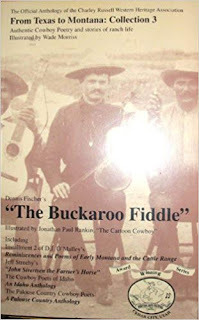
WHAT DO YOU ENJOY MOST ABOUT BEING A POET?The challenges and opportunities of the revision process. “Nothing happens except in revision” is a mantra I owe to my mentors and NEC. All the worthwhile creation and adjustment for final effect-- all the “play” associated with a piece-- is concentrated in that process. Anybody who says to you “I wrote this in 10 minutes” is probably showing you something that could as easily have resulted from an explosion in a print shop.
WHAT IS THE HARDEST THING ABOUT POETRY?Finding the right words and then getting them in the right order.
WHAT WERE YOU IN A PAST LIFE, BEFORE YOU BECAME A POET?I know one person who claims to be a professional poet, whose sole income is revenue from public readings, speaking engagements, and publishing sales. He also is eligible for food stamps. So nearly everyone is something else at the same time they are a poet or they are living in a cardboard box under an overpass. Like many others, I’m a career teacher of English language and literature with experience at secondary and university levels. I’m a consultant for second-language academic writers working in English. I’m also an Associate Editor for Poetry & Prose at OPEN: Journal of Arts & Letters (O:JA&L). And that last is a volunteer position.
WHAT IS YOUR GREATEST WRITING ACHIEVEMENT?I’ve achieved a few milestones. My cowboy poem “Ol’ Smoke” appears in the third anthology published by Gibbs Smith Cowboy Poetry: The Reunion commemorating the genre. My haibun “El Paso: July” was selected by Robert Olen Butler for inclusion in The Best Small Fictions 2015 from Queen’s Ferry Press. My first book Sunday Creek won widespread approval from cowboy poets and mainstream readers alike. My second book An Atlas of the Interior, a collection of poetry, haibun, and flash memoir, also was well-received. But the “greatest writing achievement is ever and always the last thing that I’ve finished. This time it’s a chapbook of haibun called WILE: Sketches from Nature.
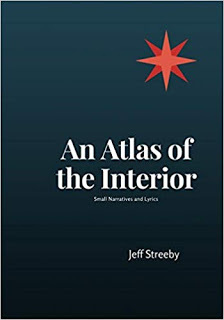
WHAT ARE YOU WORKING ON AT THE MOMENT?In addition to curating the OPEN journal and coordinating its Contributing Editors, I’m building a writing workshop for poets to be delivered at the local library in November and for a later launch on Youtube. Poets will bring a late version of a poem and we’ll use the O:JA&L screening rubric to determine if any of them are in a publishable form.
WHAT INSPIRES YOU?I guess I’m a narrative pastoralist.
WHAT SORT OF POETRY DO YOU WRITE?Prosey stuff. Carefully organized rhythmically, but prosey. Some lyrical things but most have or imply a traditional narrative structure or otherwise supply hints of a complex backstory. The imagery and the situations in my latest book are drawn almost exclusively from natural scenes of rural America-- from the Southwest, the Far West, and the upper midWest. There’s nothing elitist about my work. There are some things that will reward a careful, skillful reader, but generally people don’t need university training in modern poetry to have a good time with my stuff.
In addition to his frequent publication in mainstream literary journals, my works have been included in the anthologies The Big Roundup, a project of Cowboypoetry.com, and in Cowboy Poetry: The Reunion, third in a series of definitive cowboy poetry anthologies published by Gibbs Smith.
DO YOU HAVE ANY TIPS FOR ASPIRING POETS?Read widely. Write much. Submit often. And never, ever quit your day job. Unless you win The Lottery.
DO YOU SUFFER FROM WRITER’S BLOCK?“Writer’s Block” is a myth. If you understand “Writer’s Block” as a psychological paralysis that comes from trying to do too much at once, you can find a way through it every time. Anybody can write a sketch of a single moment, a description of an object on the desk, a list. Do any of those little things and writer’s block simply vanishes.
DO YOU HAVE A PREFERRED WRITING SCHEDULE?I’m usually a “night writer.” I often work after “lights out” for everybody else. That is an old habit that comes from raising three smart, active children.
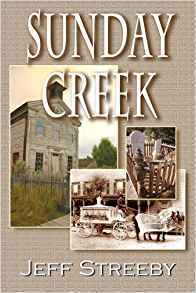
DO YOU HAVE A FAVOURITE WRITING PLACE?I know I contradict the contemporary wisdom that ays you need a devoted space, a sanctum free from intrusion on your processes, but I can write anywhere I can set up my laptop. Literally, anywhere. I wrote four semesters worth of academic papers sitting all night in a booth at a Sambo’s Restaurant in Iowa City.
WHAT IS YOUR GREATEST JOY IN WRITING?Getting a piece picked up by a publisher. That means it has found an audience. It has become another fulfilled ambition.
WHO IS YOUR FAVOURITE AUTHOR AND WHY?I have several favorites. Hemingway and Basho for economy of language, Lawrence Durrell (The Alexandria Quartet) and Cormac McCarthy (the Tex-Mex Westerns) for narrative tone and richness, the Anglo-Saxon bards and Walt Whitman for control of rhetorical devices and rhythms, Gerard Manley Hopkins for creative manipulation of diction and the music of language, Emily Dickinson for energy and control of image, T.S. Eliot for balance of all elements, Jane Heap for the single prose poem “White,” Robinson Jeffers for the single narrative poem “The Roan Stallion,” Robert Bly for the single book The Morning Glory, Stephen Vincent Benet for the epic poem John Brown’s Body, and Robert Haas, Billy Collins, and Gerald Stern for their bodies of work.
WHAT’S THE GREATEST COMPLIMENT YOU EVER RECEIVED FROM A READER?Tears. I get a few kind remarks now and again, but the most remarkable reaction was tears from a woman when I recited “Ol’ Smoke,” a poem about a foul-tempered aging cowdog, for a large audience at a cowboy gathering in Ruidoso, New Mexico. She said she had owned a dog just like the one described.
WHAT WAS THE WORST COMMENT FROM A READER?The worst reactions from readers are the generic rejections from publishers. If you write, you will get far more rejections that acceptances. I repeat, “Don’t quit your day job.”
WRITERS ARE SOMETIMES INFLUENCED BY THINGS THAT HAPPEN IN THEIR OWN LIVES. ARE YOU?I think writers are only influenced by things that happen in their own lives. It’s likely impossible for a writer to escape from his unique set of experiences (which establish the writer’s internalized world view and value structures) and still be genuine and authentic. Attempting to abandon experience in favor of some abstracted and intellectualized substitute seems like an aesthetic suicide. Maybe that’s why I prefer more transactional poems that represent features and qualities of the real world.
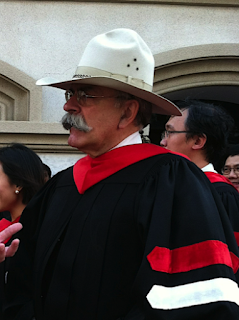
OTHER THAN WRITING, WHAT ELSE DO YOU LOVE?I’m a hunter and sport shooter. I’m a horseman.
DID YOU HAVE YOUR BOOK / BOOKS PROFESSIONALLY EDITED BEFORE PUBLICATION?I’m my own editor. I do offer them before publication to a few trusted readers. The publishing presses sometimes offer additional advice, usually about formatting, to which I most often agree.
DESCRIBE YOUR PERFECT DAY.Every day is perfect if you judge it by the criteria it offers you
IF YOU WERE STUCK ON A DESERT ISLAND WITH ONE PERSON, WHO WOULD IT BE? WHY?My wife. That’s the only safe answer.
WHAT WOULD YOU SAY IF YOU HAD THE CHANCE TO SPEAK TO WORLD LEADERS?Nothing. Leading the world is not my job. Picking the right leader (which I helped to do), that’s my job.
WHAT ARE YOUR PLANS FOR THE FUTURE?I’m going to mow the lawn. I try not to plan too far ahead. That would imply that I take time for granted.
WHAT FIVE BOOKS WOULD YOU TAKE TO YOUR GRAVE?Death in the Afternoon, Leaves of Grass (Deathbed edition), John Brown’s Body, Shakespeare’s folio edition, and KJV.
DO YOU SEE YOURSELF IN ANY OF YOUR CHARACTERS?Many of my pieces are first person POV, so that’s intended.
DOES THE PUBLISHING INDUSTRY FRUSTRATE YOU?Not really. It’s just another maze. If you submit often enough in enough different places, your work, if it’s good, will find a way to the audience.
DID YOU EVER THINK OF QUITTING?No. Poetry is just a game writers play with publishers and readers. You can’t win if you don’t enter up. “If you don’t like the ramrod or the cavvy, roll your sougans and travel,” as the old cowboy says. For now, it all suits me fine.
WHAT WAS YOUR FAVOURITE POEM TO WRITE? WHY?“Horse: 4 Frames” is a long syllabic poem (16 syllables/line) of maybe 400 lines, executed in four distinct voices. It was published in Los Angeles Review in Volume 8 (Fall 2010). Fun to write and still fun to read. It’s also in An Atlas of the Interior. “Horse: 4 Frames” is, I think, the best piece from my MFA manuscript project. One of my most admired mentors, the poet Carol Frost, told me she found it to be “admirable.” High praise, for my money.
HOW WOULD YOU DEFINE ‘SUCCESS’ AS A WRITER. Publication. That’s the purpose of writing. Success is achieving your purposes.
WHAT SHOULD READERS WALK AWAY FROM YOUR POETRY KNOWING? HOW SHOULD THEY FEEL?They should know something they didn’t know before and have the sense of having done something they had never done before. That should be a satisfying experience.
HOW MUCH THOUGHT GOES INTO DESIGNING A BOOK COVER?I was consulted only on the design of my first book cover. That design (Sunday Creek) went through three iterations before it did enough to serve the contents. The publisher’s graphic artist designed the second cover (An Atlas of the Interior)-- the focussing device was a red compass rose on a dark blue field. Title & by line were in white. I proposed a design for the third book (Wile) and the publisher approved it.
WHAT’S YOUR ULTIMATE DREAM?A Pushcart. That’ enough.
WRITING IS ONE THING. WHAT ABOUT MARKETING YOU, YOUR BOOKS AND YOUR BRAND? ANY THOUGHTS?I’ve got marketing help from my publishers and from a marketing firm. Click the links.
ARE YOUR BOOKS SELF-PUBLISHED?Self-publishing for a new poet is a way to guarantee that the work will be available only to the smallest conceivable audience-- the people to whom it is given.
DO YOU HAVE AN AGENT?No. Most poets don’t need an agent until they win the National Book Award or the Pulitzer. Genre writers or those who write with the mass markets in mind, they need agents. I don’t write that kind of books. I write poems and once in a while I gather them into a collection.

AMAZON

Clancy's comment: Thanks, Jeff. Well done. There is some good advice here.
I'm ...


Published on December 05, 2018 13:44
December 4, 2018
5 December 2018 - SOME BRILLIANT BLACK AND WHITE PHOTOGRAPHY
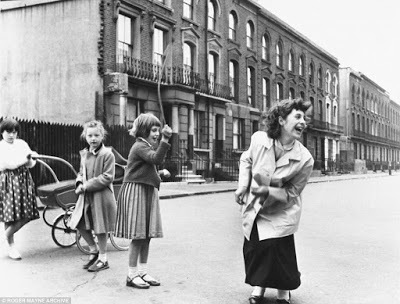
SOME BRILLIANT BLACK AND WHITE PHOTOGRAPHY
G'day folks,
Time to appreciate some great black and white snaps.


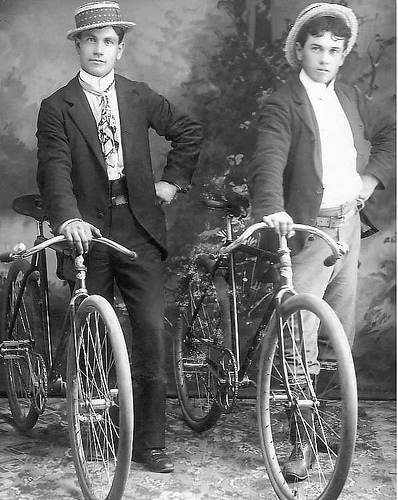

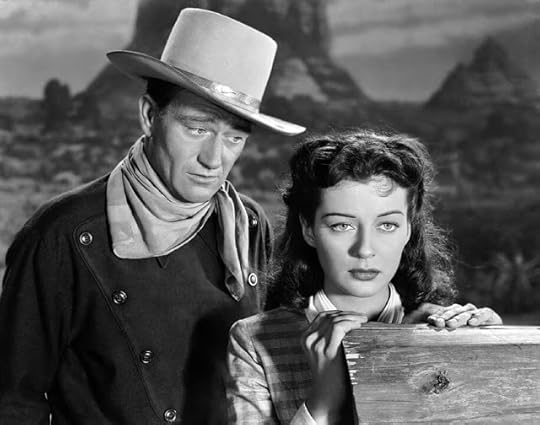

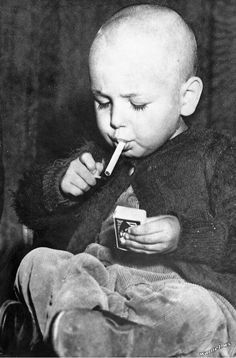

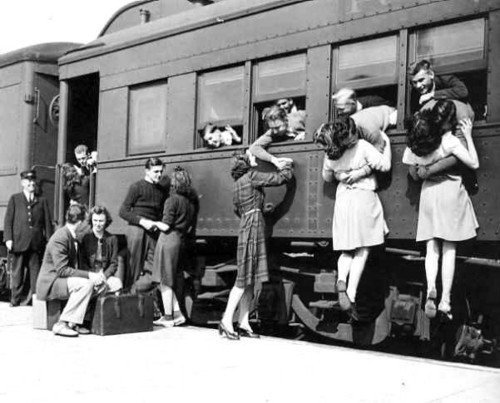
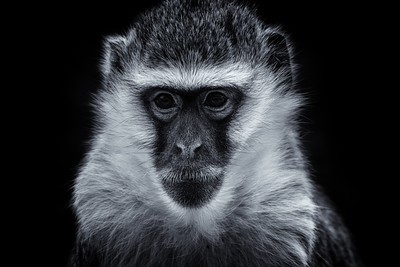


Clancy's comment: Many thanks to the photographers. I still reckon that black and white is best. The details are so clear.
I'm ...
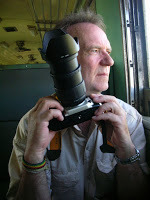

Published on December 04, 2018 12:27
December 3, 2018
4 December 2018 - WEIRD AND WACKY STUFF

WEIRD AND WACKY STUFF
G'day folks,
It's time to check out some wacky stuff. The Internet is full of it.


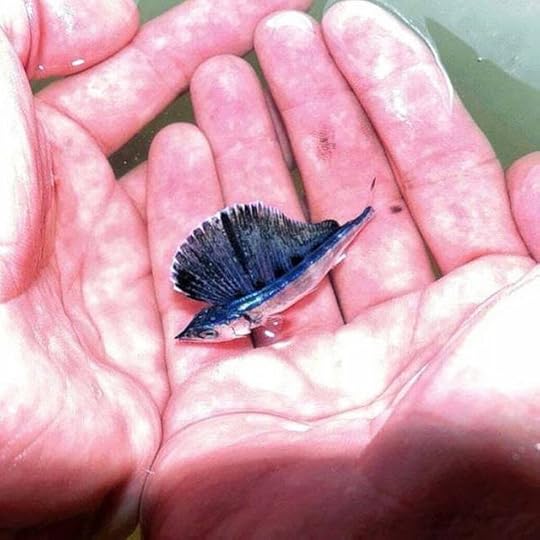











Clancy's comment: Loved the stacked wood, the baguettes and the leaf beetle.
I'm ....
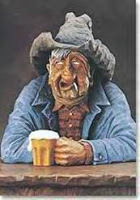

Published on December 03, 2018 12:04
December 2, 2018
3 December 2018 - AMAZING FACTS ABOUT THE PRAIRIE DOG
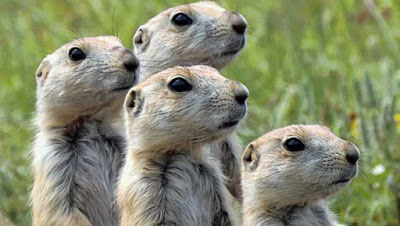
AMAZING FACTS ABOUT THE PRAIRIE DOG
G'day folks,
Prairie dogs are herbivorous burrowing rodents native to the grasslands of North America. The five species are: black-tailed, white-tailed, Gunnison's, Utah, and Mexican prairie dogs. They are a type of ground squirrel, found in the United States, Canada and Mexico.
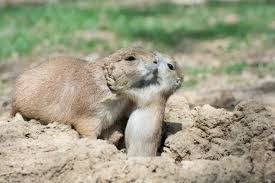
Prairie dogs play a vital role in maintaining the prairie ecosystem. Their churning activities aerate the soil allowing more water penetration, and their nitrogen-rich dung is a natural fertiliser which improves soil quality and vegetation.

Quick FactsType: Mammal (rodent)Diet: HerbivoreLifespan: 3-4 yearsSize: Average around 30-40 cm longWeight: 0.5-1.5 kgHabitat: Prairies and plateaus Range: North AmericaScientific name: Cynomys Facts About the Prairie DogPrairie dogs live in underground burrows which have a complex tunnel and warren system. They have specific areas for nurseries, sleeping, toilets and even listening posts near exits. The tunnels are arranged so as to allow air to flow through them providing ventilation.Prairie dogs are highly social, living in large groups called “towns”. They co-operate to share food, protect their burrow and often groom each other. When group members meet each other they give them a prairie dog kiss, or nuzzle.Prairie dogs act together to ensure each others’ safety. While the group forages and maintains the burrows, one or more individuals act as a sentinel keeping watch for danger. The sentinel will give a loud alarm bark if a predator approaches and the group will head for the safety of the burrow.Prairie dogs are intelligent animals with complex communication. They have a range of different barks and chirps for communicating different messages. They have specific calls for specific predators, and even have a specific alarm call for humans with a gun.Ecologists consider prairie dogs to be a keystone species of immense ecological importance. Snakes, burrowing owls and some other species use their deserted burrows for nesting areas. They are also an important food source for many predator species including the rare black-footed ferret.Prairie dogs are diurnal, meaning that they are most active at dawn and dusk.Female prairie dogs go to the nursery burrow when they are ready to give birth. Young pups are born hairless with their eyes closed, and are totally dependant on their mother’s care and love. They do not leave the burrow until they are about 6 weeks old, and only consider leaving the group after they are a year old.The name Prairie dog was given due to their habitat (prairies/grasslands) and their warning calls which sound like barks. The genus name Cynonyms derives from the Greek for “mouse dog”.Prairie dogs play a vital role in maintaining the prairie ecosystem. Their churning activities aerate the soil allowing more water penetration, and their nitrogen-rich dung is a natural fertiliser which improves soil quality and vegetation.
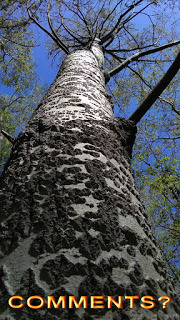
Clancy's comment: Learning about their tunnels, makes me wonder if the Viet Cong learnt from these little guys.
I'm ...


Published on December 02, 2018 12:58
December 1, 2018
2 December 2018 - CHECK OUT A VALLEY OF BUTTERFLIES
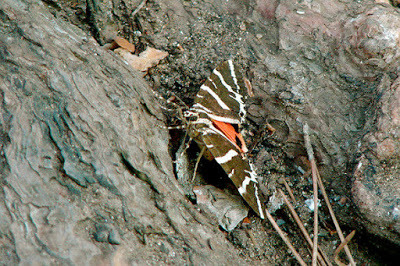
CHECK OUT A VALLEY OF BUTTERFLIES
G'day folks,
Every year, thousands of delicate, winged creatures migrate from the thickets and bushes of the Mediterranean, following the waterways to the humid Petaloudes Valley, more commonly known as the Valley of the Butterflies. Toward the end of May, as the dry season approaches, the butterflies swarm over rocks and trees, resting their fragile atrophic peptic system until mating season begins.
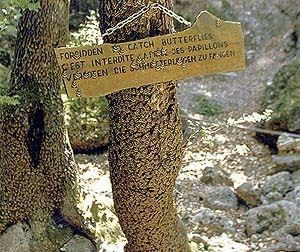
A subspecies of the Jersey Tiger Moth unique to the island of Rhodes, Euplagia quadripunctaria rhodosensisis attracted to the valley by the scent given off by the Oriental Sweetgum trees that thrive in the area. Fluttering lightly, they cover every available surface. Waterfalls, shade and foliage make for the perfect romantic setting, and as soon as the intricate insects have rested, it’s time to begin their mating season.
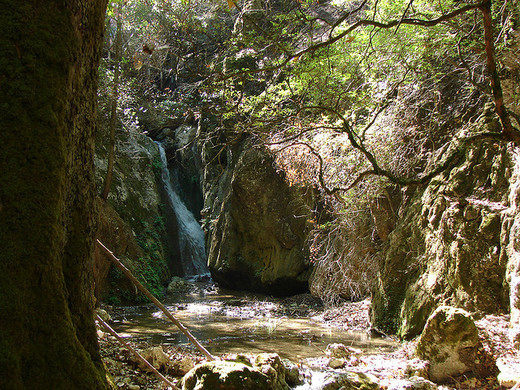
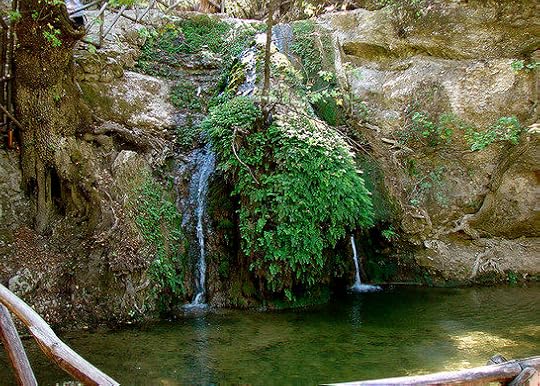

While the valley is open and visitors encouraged, the impact of so much foot traffic is showing clear signs of strain on the population of the very attraction people come to see. Due to the nature of their biology — butterflies have no stomach, and their energy consists of reserves from their larval stage — constant disturbance from visitors clapping or whistling to encourage the bugs to fly off of their resting places, while quite visually pleasing, saps precious energy from the insects that cannot be replenished. If you go to witness this amazing migration, wear suitable shoes for hiking, please step lightly, and do not disturb the tiny residents.
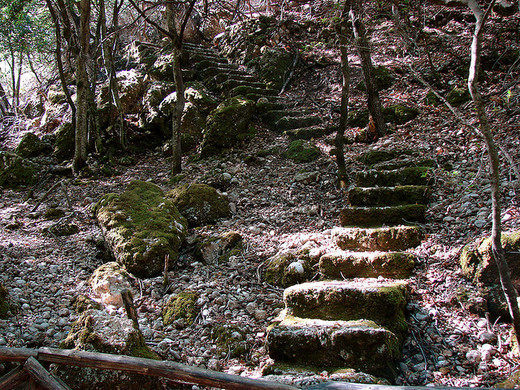
The Valley of the Butterflies (Petaloudes) is located about 25 km (15.5 miles) from Rhodes City, on the western side of the island, about 5 km (3 miles) southeast of the village of Theologos.

Clancy's comment: Wow, looks like a great place to be. No wonder the butterflies go there.I'm ...

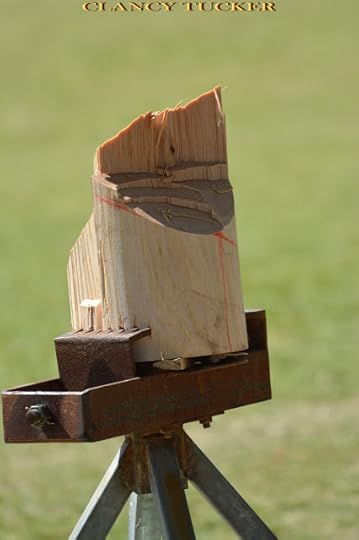
Published on December 01, 2018 14:12



